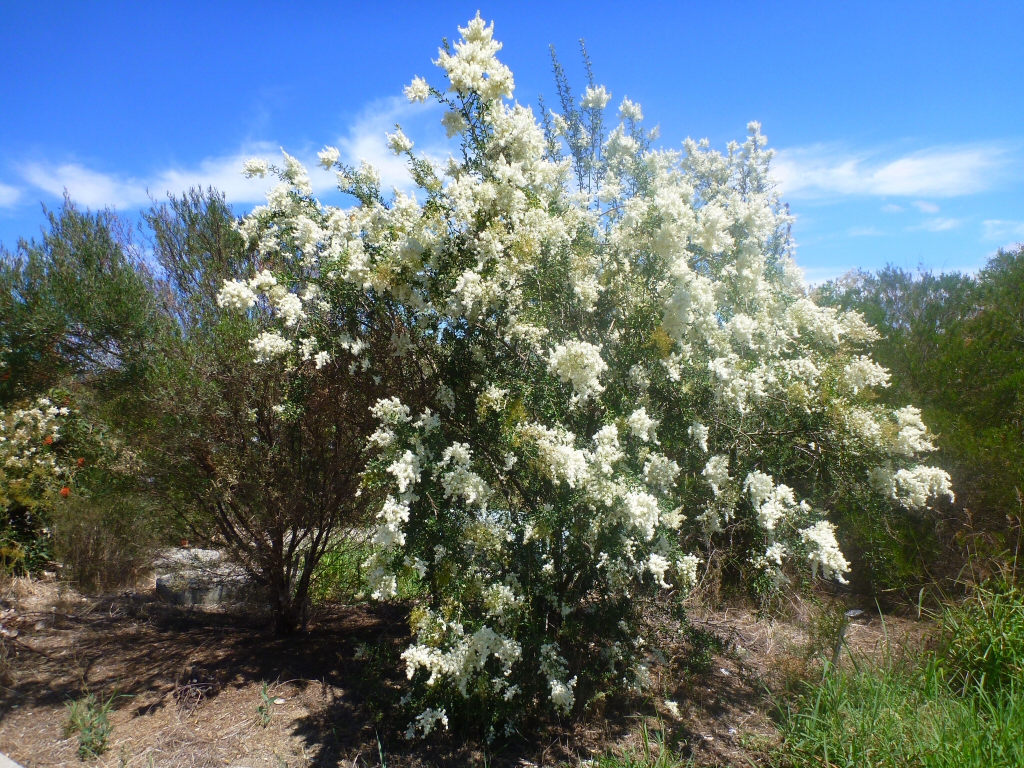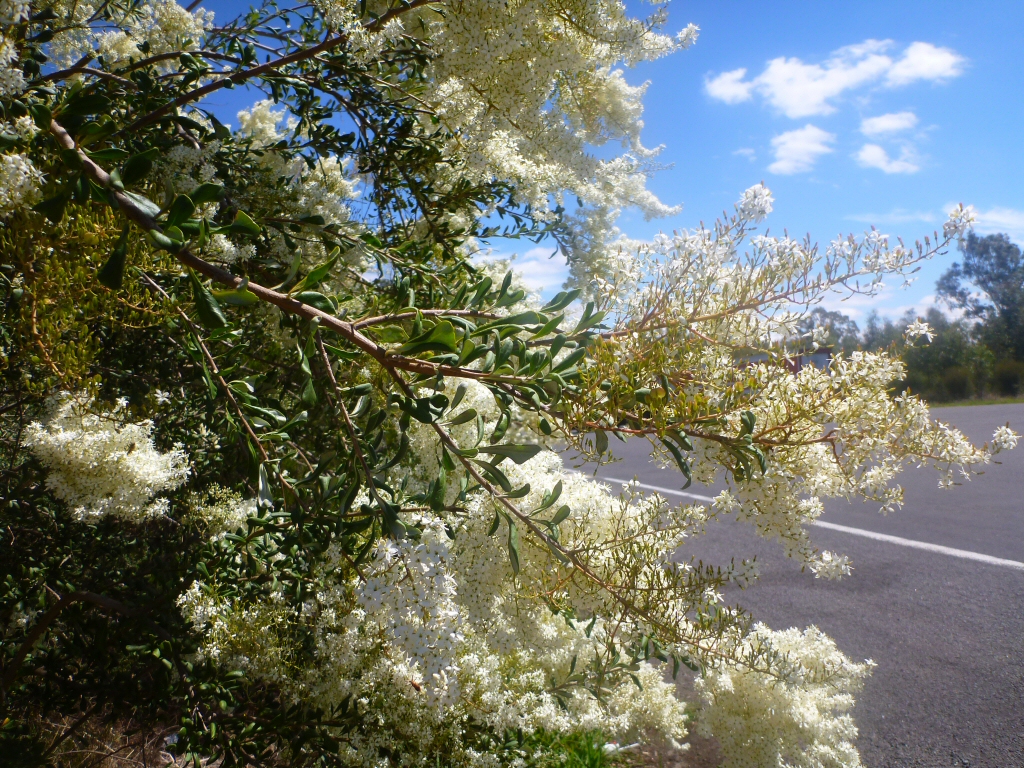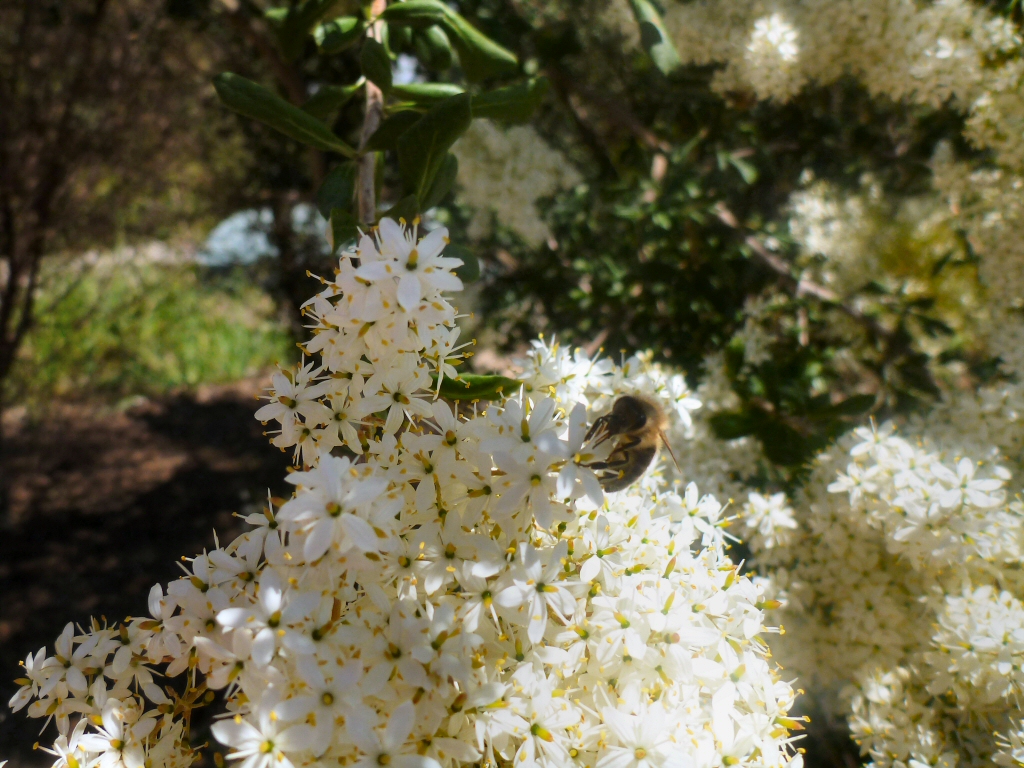-

Bursaria spinosa - sweet bursaria
-

Bursaria spinosa - sweet bursaria
-

Bursaria spinosa - sweet bursaria
A small shrub usually about 3 to 4m tall which produces abundant small white flowers through Summer. Native to the east coast, the form in the wild varies greatly depending on habitat — ranging from a prostrate shrub to a small tree — in cultivation it is usually grown as a small to medium shrub for garden and landscape settings. The flowers are sweetly perfumed, making this shrub a lovely feature plant, and it’s hardiness makes it a good choice for garden and landscape use. Low maintenance and fast-growing, it performs best in well drained soil and will thrive in conditions from full sun to partial shade. Yearly pruning will prevent it becoming leggy and sparse. Great for attracting wildlife as the dense prickly foliage offers a protective shelter for birds and the flowers also provide an important food source for butterflies and other insects.
